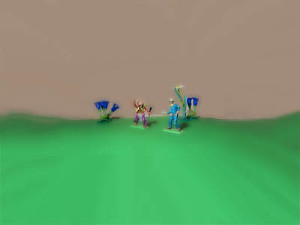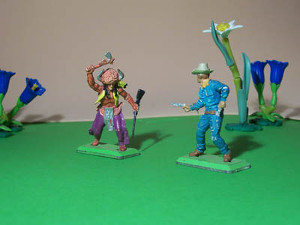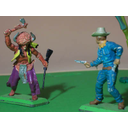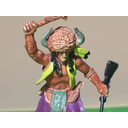Shots
Choose the correct shot:
Descriptive shots
Shots canrefer to the distance at which the camera is positioned with respect to the object recorded (near or far).
They describe the place where action is taken.
- Extreme long shot: describes and shows the broad scenario where many characters appear. There is much distance between the camera and the object.
- Long shot: describes and locates the actors in the context of the scene. Begin to distinguish the contrasts between the characters.
Narrative shots
They narrate the action is happening.
- Full shot: the body of the character is the limit of the entire screen (head to toe). Shows very well to develop action actors.
- Medium shot: The actor showed from the waist up. The proximity of the camera allows you to enjoy the emotions of the actor, but the surrounding environment is not reflected.
- American shot: is a medium shot extended to the knees of the actor, showing the face and hands.
Expressive shots
Show the expression of the protagonists.
- Close-up shot: shows the face and the shoulder of the character. The camera is located very close to showing emotions and feelings of the protagonist. Are usually close-ups that combine with others as they do not provide much information about the action and the context.
- Extreme close-up: shows a portion of an object or character. Are usually close-ups that combine with others as they do not provide much information about the action and the context.
Narrative & expressive shots
Joining shots
To tell a story we need continuity.
The continuity in audiovisual production is also called raccord.
For example, we talk about raccord looks when it seems that two characters are looking at whether the plans together, although they were recorded at different times and spaces.
Types of continuity:
- Space: heading toward where the actors, gestures and glances.
- Apparel and scenario: each sequence is recorded there to check that everything is in order so they do not notice that there were recorded followed.
- Lighting: there is no sudden change of tone in the same sequence and space.
- Interpretation: caring tone of voice and expressiveness to the plane change is natural.
Licensed under the Creative Commons Attribution Share Alike License 4.0







